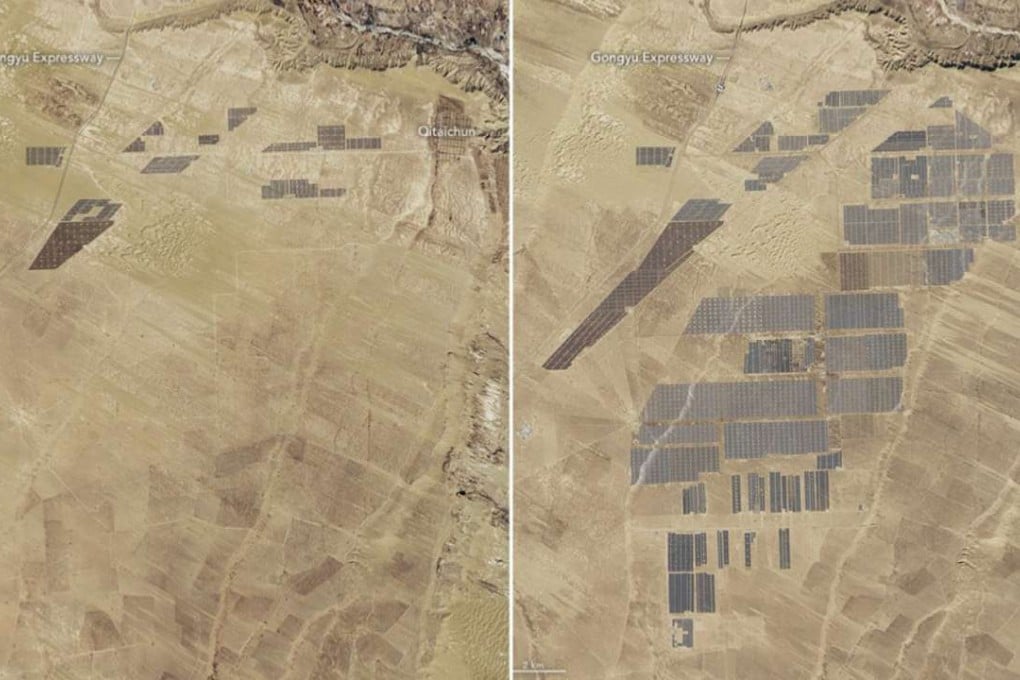China’s world-beating solar farm is almost as big as Macau, Nasa satellite images reveal
US space agency Nasa has released remarkable images of a growing landscape of clean energy generation

The US space agency Nasa has released spectacular satellite images of the world’s biggest solar farm, which sits on the Tibetan Plateau in China.
The images published last week show how the Longyangxia Dam Solar Park in northwestern Qinghai province grew from a small cluster of panels to become a sprawling farm with 4 million solar panels in just four years.
The images of the 27 square kilometre solar farm – the world’s largest – were captured by Nasa’s Landsat 8 satellite in April 2013 and last month.
The farm is almost the size of Macau, which is about 30 sq km, and can generate 850 megawatts of clean energy, enough to supply power to 200,000 households.
On social media, where Nasa’s images were shared widely, internet users expressed awe at the massive display.
One Facebook user wrote: “That’s amazing! I’m glad to see that China is using this kind of technology.”